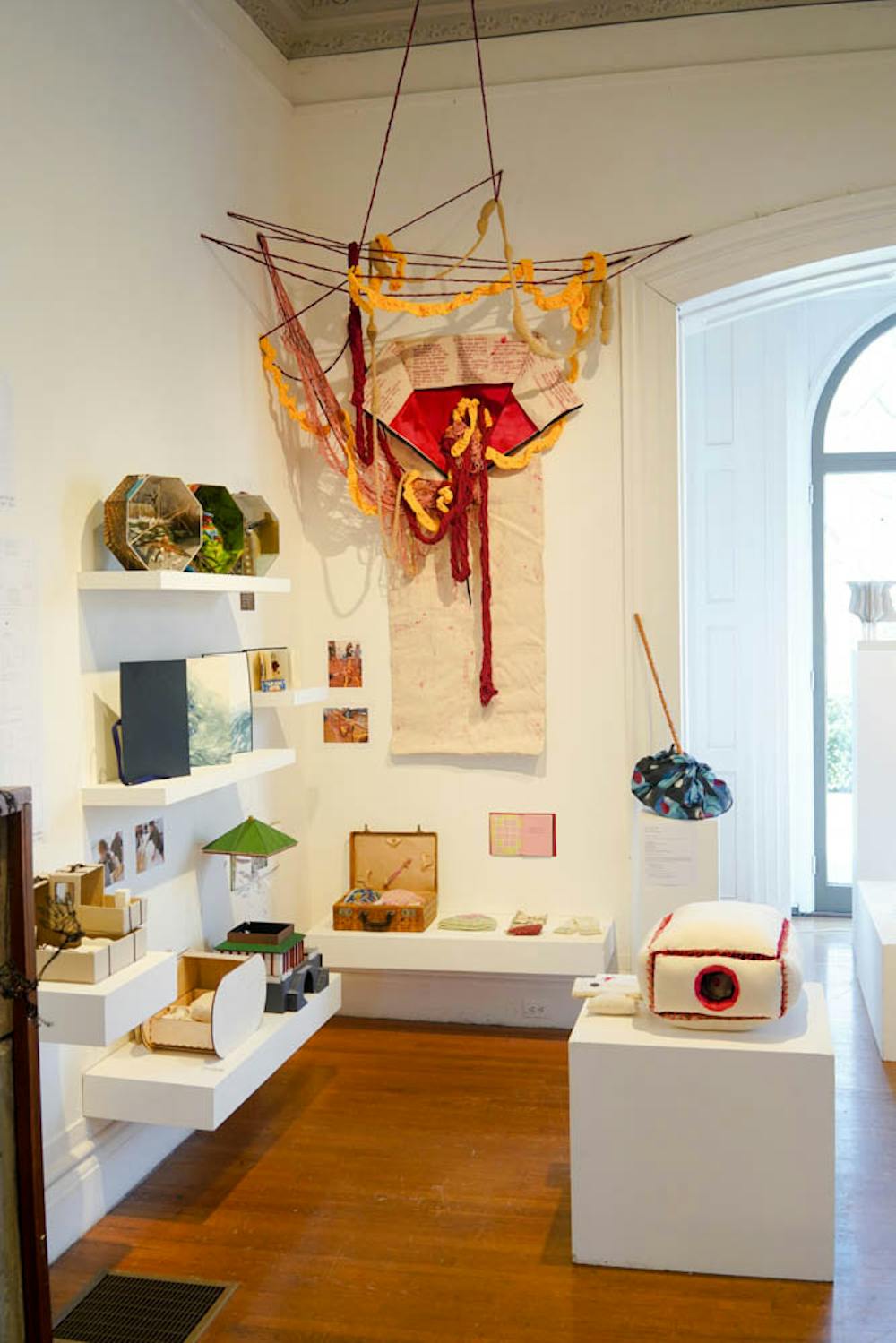Spread across four large rooms on the first floor of the Woods-Gerry Gallery, pieces composed of a multitude of materials, from paper and wood to textile and glass, are displayed as part of the Rhode Island School of Design’s Triennial Experimental and Foundation Studies exhibition. The show opened to the public on Jan. 30, and will remain until Feb. 16.
Experimental and Foundation Studies is a compulsory program taken by first-year RISD students that “emphasizes rigorous critical inquiry,” according to the program’s website. The exhibition featured artworks produced by students during their time in this program. “We selected works from last spring and this fall that (capture) students in two phases,” said Shawn Greenlee MA ’03 PhD ’08, the EFS program head.
The theme for this year’s exhibition was “duration and emergence.” The theme “really represents the way we teach and the way the program is structured,” said Ken Horii, professor of Spatial Dynamics, who was responsible for a “lion’s share” of the exhibition’s technical organization, Greenlee wrote in an email to The Herald.
The exhibition was collectively curated by EFS faculty, who looked for pieces that “(were) not a goal-oriented conclusion … but something that emerges from the process,” Horii said.
When curating this show, EFS faculty must reconcile the encouragement of “moving between different media” with the limited space of the exhibition. Horii said that this year’s main challenge was accommodating the “explosion of submissions” of student-made videos. “The only final decisions (the technical team) makes are … logistical,” said Horii, whose role focused mainly on “aesthetic judgement.” Even with two prior exhibitions’ worth of experience, Horii acknowledged the technical challenge of organizing the selected works, noting how “there (are) a lot of variables and unpredictables.”
“We have a lot of conversations about that throughout the day: Is it a soft piece? Is it a hard piece? Is it tall? Is it short? Is there a lot of pattern? Is it simple or irregular? That kind of thing,” he said.
Ultimately though, “everything eventually comes together, it’s just a matter of time,” Horii said.
The EFS curriculum “has existed for a very long time, coinciding with the beginning of RISD becoming a higher education institution,” Greenlee said. He explained that the program is primarily concerned with “(students) forming their own foundations and not following the footsteps of others but creating their own pathways.”
In 2010, the division changed its name from Foundation Studies to Experimental and Foundation Studies “to communicate better to the world what happens in this first-year program,” said Greenlee. The program consists of three sections — Drawing, Design and Spatial Dynamics — to advance its experimental philosophy.
EFS is “all about inquiry … about finding and arriving at new questions through the work so that you’re constantly in a process of development,” Greenlee added. With almost eight hours of studio time per section every week, “students can really slow down, decompress and figure out what they’re doing,” he said. “Work comes out of (this process) that couldn’t come out of a shorter duration course.”
Paphonvit Wanitprapha RISD ’23 described the EFS studio sessions as “super fun because (RISD) allows you to experiment with so many mediums.” This multimedia approach is “something that will be evident in the exhibition,” Greenlee said.
“When you walk through you’ll see this amazing variety of work … you’re seeing the best of the first-year work,” Horii said.





